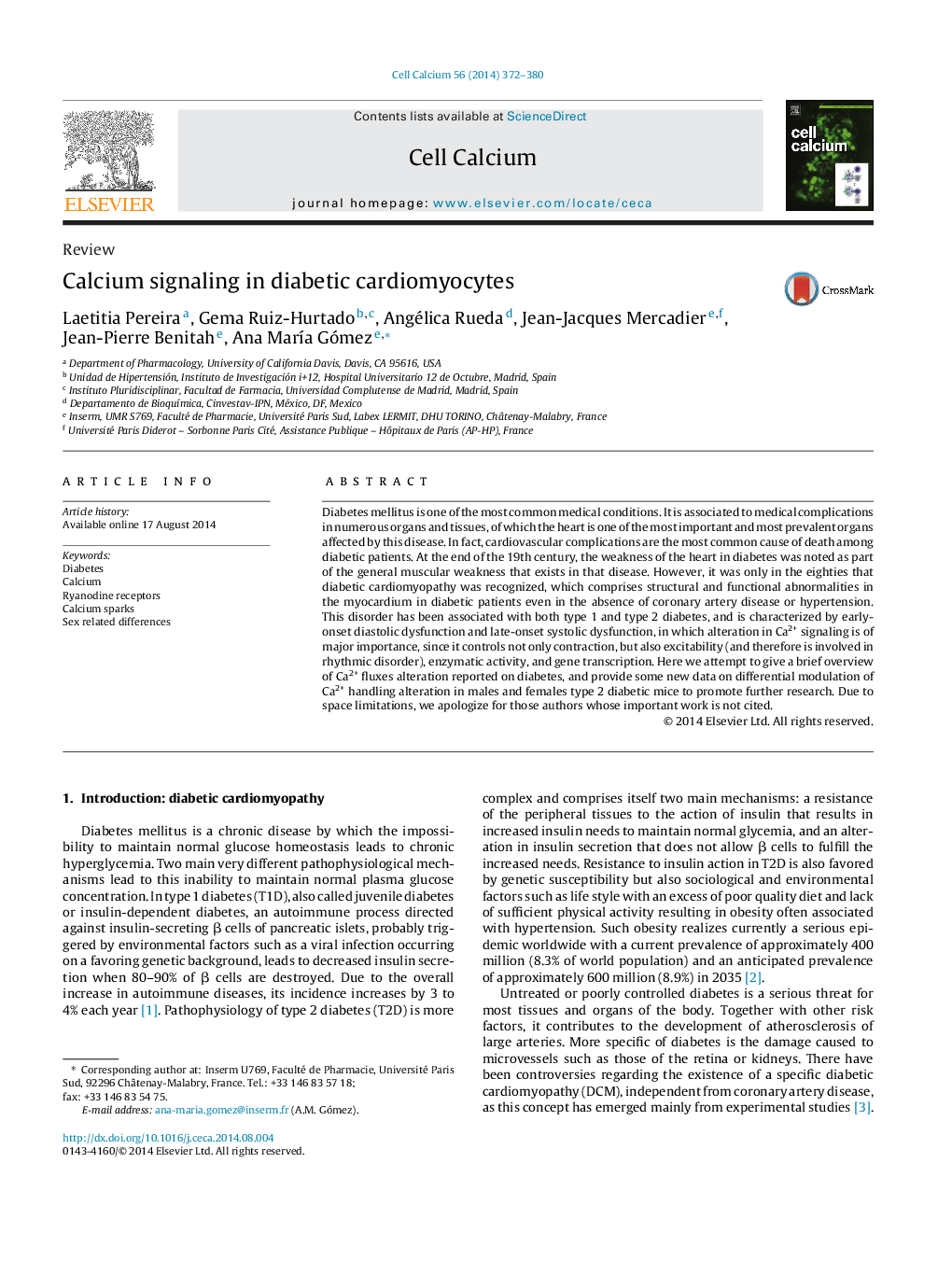| Article ID | Journal | Published Year | Pages | File Type |
|---|---|---|---|---|
| 2165991 | Cell Calcium | 2014 | 9 Pages |
•We review recent research on calcium handling in cardiomyocytes of diabetes patients.•Distinction between type 1 and type 2 diabetes is made.•We provide some new data showing that males and females respond differently.
Diabetes mellitus is one of the most common medical conditions. It is associated to medical complications in numerous organs and tissues, of which the heart is one of the most important and most prevalent organs affected by this disease. In fact, cardiovascular complications are the most common cause of death among diabetic patients. At the end of the 19th century, the weakness of the heart in diabetes was noted as part of the general muscular weakness that exists in that disease. However, it was only in the eighties that diabetic cardiomyopathy was recognized, which comprises structural and functional abnormalities in the myocardium in diabetic patients even in the absence of coronary artery disease or hypertension. This disorder has been associated with both type 1 and type 2 diabetes, and is characterized by early-onset diastolic dysfunction and late-onset systolic dysfunction, in which alteration in Ca2+ signaling is of major importance, since it controls not only contraction, but also excitability (and therefore is involved in rhythmic disorder), enzymatic activity, and gene transcription. Here we attempt to give a brief overview of Ca2+ fluxes alteration reported on diabetes, and provide some new data on differential modulation of Ca2+ handling alteration in males and females type 2 diabetic mice to promote further research. Due to space limitations, we apologize for those authors whose important work is not cited.
Graphical abstractFigure optionsDownload full-size imageDownload as PowerPoint slide
